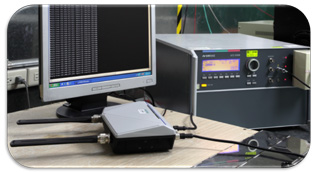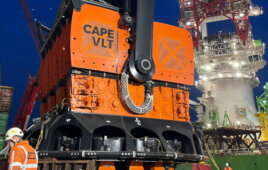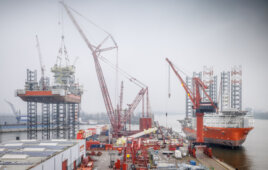This article intro comes from Moxa.

Switching disturbances, short circuits, and especially lightning strikes, inject voltage spikes that can damage wireless devices. Surge protectors, such as transient voltage surge suppressors, metal oxide varistors , and gas discharge tubes , are necessary to provide industrial-grade protection against electrical transients
Wireless failures at home or the office are an inconvenience, but in industrial applications, they can jeopardize the safety of onsite personnel, damage expensive machinery and equipment, and possibly translate into thousands of dollars per minute in production losses. In addition to network redundancy, industrial operators must also assess the application environment for elements that can impact network performance, compromise device reliability, and lead to unplanned system downtime.
Many industrial wireless applications, such as those for mining, railway, and oil & gas, are deployed in harsh environments and require the use of industrial-grade devices. While some environmental factors are obvious, such as extreme temperatures and moisture, there are other elements that are not so apparent but can also quickly disable an unprotected device. Below is a list of environmental conditions and effects commonly found in industrial wireless applications that can cause a device to malfunction or fail entirely.
• Power interference
• Magnetic field and emissions
• Flammable gases
• Extreme temperatures
• Humidity and moisture
• Airborne particles and contaminants
• Shock and vibration
Industrial-Grade Protection for Wireless Devices
Electromagnetic Susceptibility (EMS)
According to the International Electrotechnical Commission (IEC), EMS is: “The inability of a device, circuit, or system to perform without degradation in the presence of an electromagnetic disturbance.”
Electrostatic Discharge is one of many common types of electromagnetic disturbances that can interfere with device operation. It is the sudden transfer of static electricity between two objects with different electrical potentials. For example, factory workers wearing rubber boots and gloves can easily accumulate high levels of static electricity. Physical contact with wireless devices can discharge several kilovolts of static electricity and permanently damage internal circuitry.
Read the full article here:
http://www.moxa.com/newsletter/connection/2013/06/feat_01.htm?utm_source=2013_06_Connection&utm_medium=email&utm_campaign=Connection
Moxa
www.moxa.com
Filed Under: News, O&M




